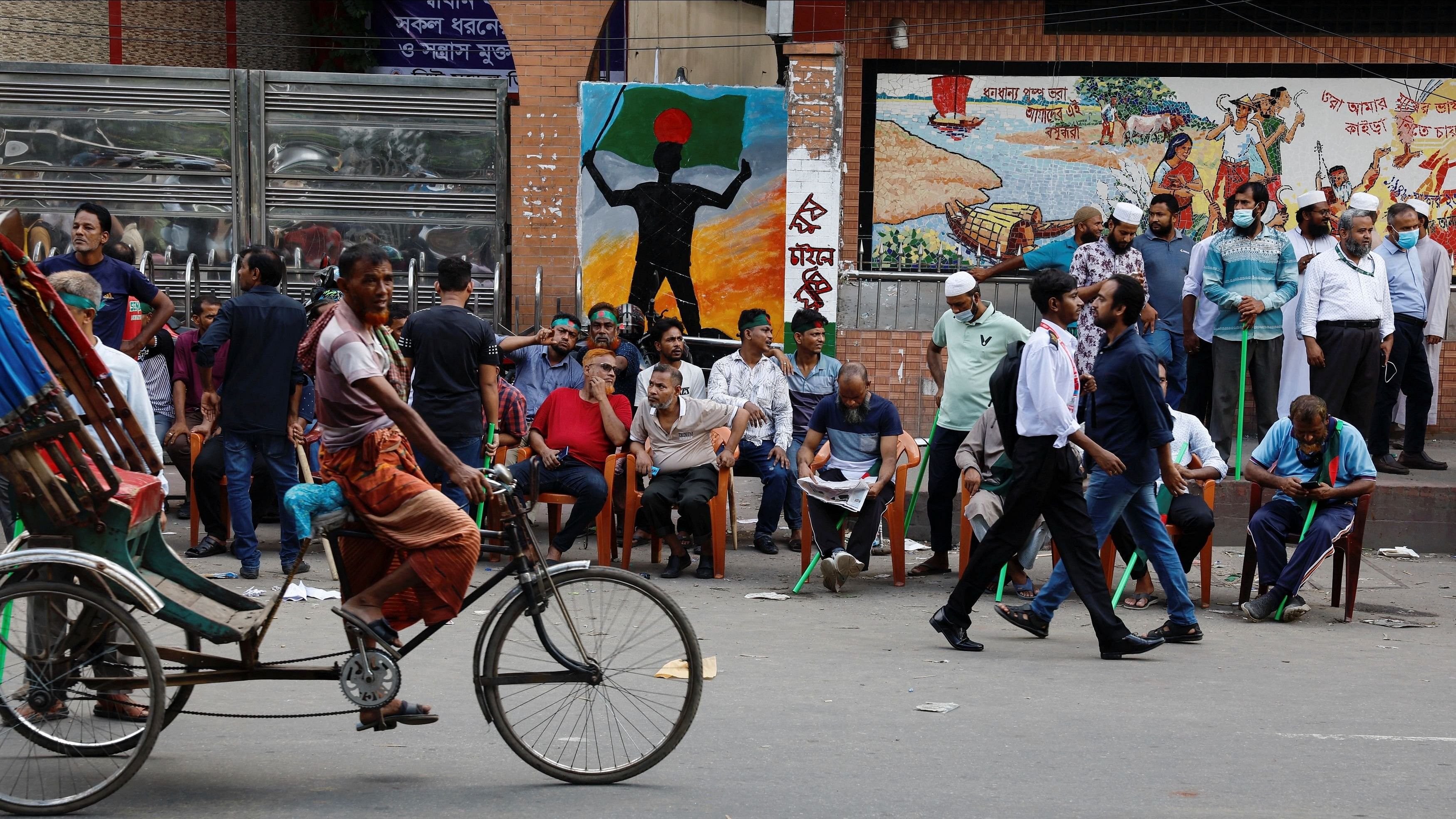
Protesters gather in front of Bangabandhu Sheikh Mujibur Rahman Memorial Museum in Dhaka, Bangladesh, August 15, 2024.
Credit: Reuters Photo
While various reasons can be attributed to the catastrophic and ruinous events in Bangladesh in the last few weeks creating anarchic conditions, the autocratic governance style of the deposed prime minister is being advanced as central to this narrative. However, viewing the present unstable situation through the narrow prism of recent events risks obscuring the fault lines and contradictions that have existed in the society and polity of Bangladesh since its creation.
In Bangladesh, three main identities compete for pre-eminence: a secularist nationalist discourse, an Islamic identity, and a popular Bengali culture that is more accommodating and syncretic. Importantly, a significant conflict exists between the Bengali culture and the Islamic resurgence in the country. In the former East Bengal, the creed of Islam was imbibed by the people but not the culture, allowing Sufism to blend easily with Vaishnavism. The Bengali popular culture is the safeguard against extremism, including Islamic hardliners.
Approximately 90 per cent of Bangladesh’s population practices Islam as a religion. While the amended Constitution of Bangladesh enshrines Islam as the State religion, it has also restored the article providing for freedom of religion and secularism. During my time attending the National Defence Course in Dhaka, I had the opportunity to interact with senior defence and civil services officers. Surprisingly, even some of the Army officers vocally emphasised the need for the paramount importance of Islam in the functioning of the State and questioned the restoration of the word “secularism” in the Constitution through the 15th Amendment.
A major fault line is rooted in the historical perspective of the country. Bangladesh is polarised into various groups that took part in the War of Liberation or stayed out of it according to their political values, beliefs, and ideologies. Since India played a predominant role in creating Bangladesh, its role is central in the narratives of these groups. Nationalists believe that India’s role was limited to bringing Bangladesh under its sphere of influence to further its economic interests and gain better access to North Eastern India. The pro-Chinese Left argues that India’s intention was to make Bangladesh a colony for supplying raw materials to the jute industry in West Bengal.
The radical Left views India as an expansionist power, considering Bangladesh’s liberation an unfinished revolution. Meanwhile, Islamists claim that India’s true motive was to break up Pakistan, the Muslim homeland, as the Hindus had never reconciled to the idea of an independent Islamic state.
Less known in India is the resentment felt by Mukti Bahini, which consists of diverse ideological entities. While they reluctantly fought under India’s overall command, they could not reconcile to India’s dominant role. The surrender ceremony was seen more as an Indian show than a Bangladeshi one, despite the fact that Gp Capt A K Khondker, who later became Air Chief, was present at the surrender ceremony. In fact, in Bangladesh, it is politically incorrect to mention the 1971 conflict as the Indo-Pak war. In the national museum at Dhaka, very few displayed items reflect India’s selfless role in its Liberation War. Even the iconic photograph of the surrender ceremony does not find a place. All these varying perceptions gave rise to propaganda that India’s help in the liberation struggle had come with a price. It then became politically expedient to blame India for all the problems Bangladesh has been facing ever since.
The print and electronic media in Bangladesh also generally play a negative role in its reporting of bilateral events with India. There is indeed a wide divergence between government-to-government interaction and public perception in Bangladesh. Minor irritants, such as delays in getting visas for travel to India and border incidents, are seen by the population as unconstructive policies of the Indian government, overshadowing the cooperative benefits. Misperceptions abound, including the belief that India is carrying out a cultural invasion by beaming its TV channels to Bangladesh while blocking Bangladeshi channels in India, particularly in West Bengal.
Despite periodic explanations from the Indian High Commission that the issue is merely commercial, with Bangladeshi broadcasters unwilling to pay the “carry fee” to Indian cable TV service providers, the issue is repeatedly raised. The average Bangladeshi views China as a favourable ally, in contrast to India, which is often seen as antagonistic.
Despite years of democracy, Bangladesh has not been able to institutionalise classical and stable civil-military relations and still lives under the shadow of the military. The principle reason lies in the nature of its politics, which is characterised by deadly confrontations, revenge, and struggle for power by the two major political parties, giving rise to a dysfunctional democratic order with an abysmal record of institution building. The Bangladesh Army, like Pakistan, is also deeply involved in commercial activities like owning the Dhaka Radisson Hotel. The Army is often called out to perform frivolous tasks for the civil administration, such as control of traffic in the national capital and distribution of water during the lean season. This enhances the Army-public interface, leading to detrimental effects on the professionalism of the Army.
These systemic incongruities make Bangladesh more divisive and vulnerable than any external factors at play in the current turmoil. They also provide context to the recent turbulence leading to attacks on minorities, the wrecking of the Indira Gandhi Cultural Centre in Dhaka, ransacking business establishments, the destruction of the Banglabandhu museum, and the and the refusal of the Army to quell the protests, especially in the initial stages, and allowing the situation to become uncontrollable.
(The writer is former Vice Chief and Southern Army Commander)